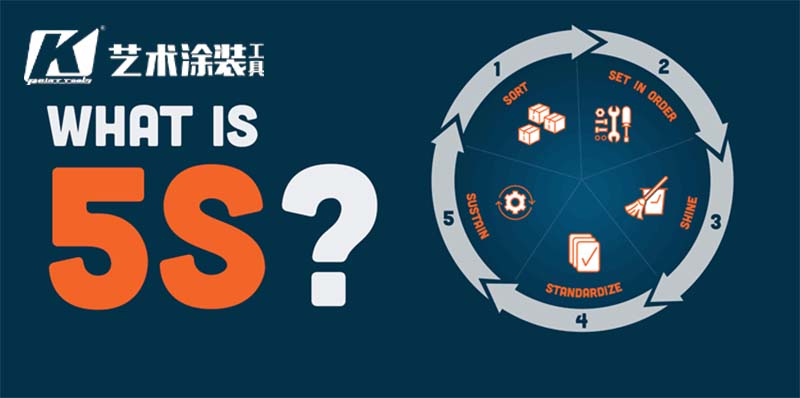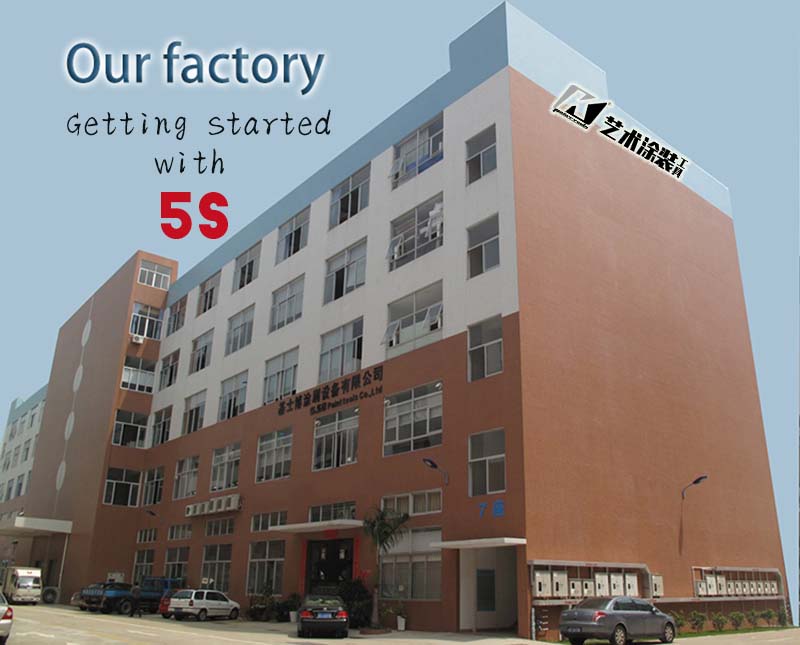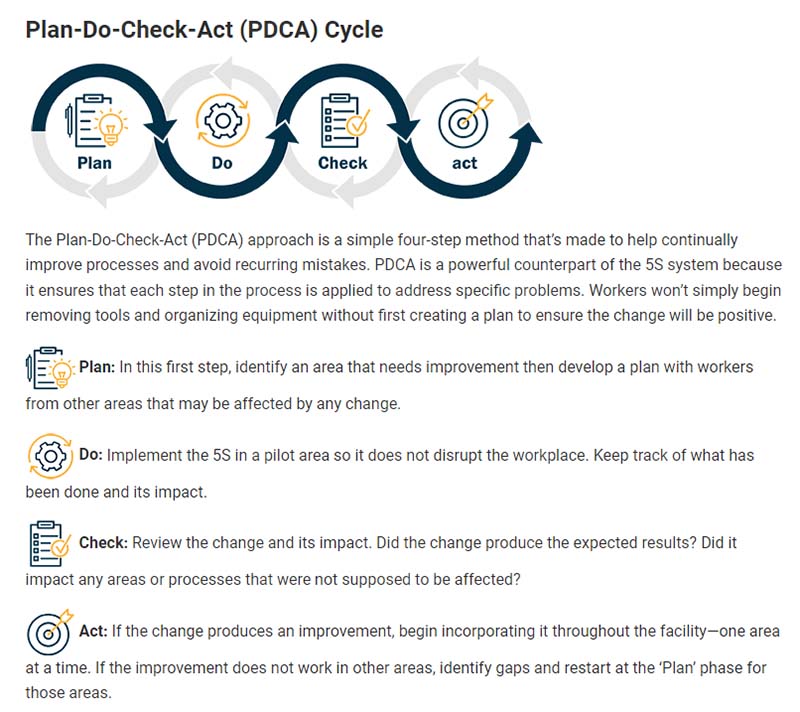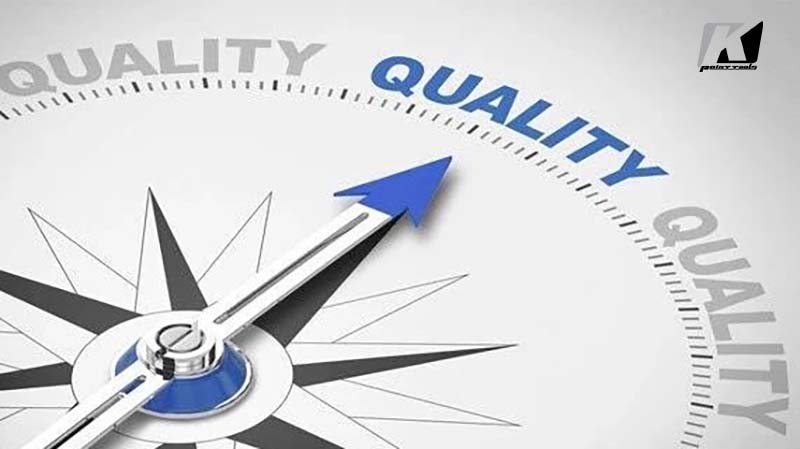The 5S system is a lean manufacturing tool that improves workplace efficiency and eliminates waste. There are five steps in the system, each starting with the lette S. By providing a systematic framework for organization and cleanliness, 5S helps facilities avoid lost productivity from delayed work or unplanned downtime.
Staying on top of operational efficiency is an ongoing challenge. The lean 5S methodology is a powerful process that helps establish organization, consistency, and visual order in the workplace. Whether you are making a significant facility transformation by incorporating new machinery and automation technologies, or simply want to better utilize your workspace by reorganizing the shop floor, 5S is an effective tool to guide this process.
5S was created in Japan, and the original “S” terms were in Japanese, so English translations for each of the five steps may vary. The basic ideas and the connections between them are easy to understand, though.

Step NameJapanese termExplanation
1. SortSeiri (tidiness)Remove unnecessary items from each area
2. Set In OrderSeiton (orderliness)Organize and identify storage for efficient use
3. ShineSeiso (cleanliness)Clean and inspect each area regularly
4. StandardizeSeiketsu (standardization)Incorporate 5S into standard operating procedures
5. SustainShitsuke (discipline)Assign responsibility, track progress, and continue the cycle
These steps feed into each other, so the sequence is important. Clearing out unnecessary materials in step 1 (Sort) will provide the space needed to organize the important items in step 2 (Set In Order). Then, once the work space is de-cluttered and organized, dirt and grime can be removed in step 3 (Shine). These changes to workers’ job duties and work environment should be reflected in updated procedures through step 4 (Standardize). Finally, those new procedures won’t amount to much unless responsibility is assigned and progress is tracked — as required for step 5 (Sustain). And with responsibility and tracking, workers will continue to apply the steps, returning to step 1.
The first step in the 5S process is Sort, or “seiri,” which translates to “tidiness.” The goal of the Sort step is to eliminate clutter and clear up space by removing things that don’t belong in the area.
For this step, take a close look at the items, paint tools, and materials in a work area. Items that are necessary or useful for the work being done in that space should be kept there. Everything else should be removed. Some of those removed items will need to be thrown away or recycled. Other items might belong to another work process or location; they should be returned to their “homes.” However, you might find some items that you aren’t sure about.
If you find an item that you can’t identify, or that has uncertain ownership, it’s time to use a red tag. “Red-Tagging” temporarily attaches a highly-visible tag to the item, which notes where it was found and when. Then, red-tagged items from all work areas are collected in a single location: a “lost and found” for tools, materials, and equipment. 5s Red tag area with floor markingIf a work area is missing an important tool, check the red tag collection area to see if it was found somewhere else. Supervisors for each work space should check the red tag collection area periodically, in case something has been missed. Anything that belongs in a work space should be taken back there.
Items may wait in the red tag collection area for a long time. In that case, the original work area (where that item came from) doesn’t seem to need it anymore. It may be useful elsewhere, though. In one common approach, items may be left in the red tag collection space for thirty days. After that, any supervisor may claim the item for their own work area. If nobody wants it after another week, the item can be removed from the facility entirely. Sell it, recycle it, or throw it away.
If an item will definitely be needed by our company, but isn’t needed right now, it might be best to store it for later. Before putting anything into storage, be sure it will actually be needed again. Have a specific plan for getting that item out of storage again, at a specific time. Don’t store things “just in case” without good cause, and keep track of what’s been stored. GSB's good corporate culture has led to employees being relatively self-disciplined.
The second step, Set In Order, was originally called “seiton,” which translates to “orderliness.” A variety of names have been used in English: “Systematic Organization,” “Straightening Out,” and “Simplify,” for example. No matter what it’s called, the goal of this step is to organize the work area. Each item should be easy to find, use, and return: a place for everything, and everything in its place.
Tools that are used frequently should be stored near the place they are used. Spare equipment, supplies, and other tools that are used less often can be kept in a central location, where multiple teams can share them. Items that are typically used together (such as drills and drill bits) should be stored near each other. Each of these decisions will make sense on its own, but it may become difficult to keep track of everything. It may be helpful to create a 5S map as part of this process.
A 5S map is a diagram or floor plan that provides an overview of a work area, process, or station. It provides a visual reference to show where the tools, supplies, workers, and travel paths are, and how they relate to each other. A good map may also include a description of the work that happens in the area shown.
5s Set in order - keep work areas clean, efficient and safe by setting in orderDepending on your facility’s needs, you may find one approach easier than another - Draw up a map, and then implement it - Physically arrange the workplace first, and then map it out.
Map as you go, testing ideas and writing down what works well. No matter which approach is used to create it, the resulting 5S map should be kept as a training tool, used for reference in later steps of 5S, and updated over time as the work area changes.
Communicating the Plan
Once storage locations are assigned, each storage area should be labeled. Label the outside of cabinet doors to help workers quickly identify what’s inside each one. Then, label any interior shelves to show where different supplies belong. The same ideas extend to rack labels, bins, and other storage systems.
Many facilities use a “shadow board” for tool storage, to ensure that each tool is easy to put back in its correct storage place. With this approach, a label matching the shape and size of the tool is placed where that tool belongs. Workers can immediately spot where each item belongs, and know at a glance if the item is there or not. No more time wasted looking through drawers and bins. Some organizations can extend to the floor, too. Work areas, movement lanes, and storage for supplies and finished products can all be marked with floor marking tape.
The third step of 5S is Shine, or “seiso,” which means “cleanliness.” While the first and second steps cleared up space and arranged the area for efficiency, this step attacks the dirt and grime that inevitably builds up underneath the clutter, and works to keep it from coming back.
Shine moves far beyond just pushing a broom around every now and then. It involves regular cleaning of every part of the work area — often a daily wipe-down, and a more thorough cleaning each week.Importantly, the Shine step is not meant to be a job for the maintenance or janitorial staff. Each worker should clean their own work area, and the equipment they use. Workers who are familiar with the area will quickly notice any problems that arise.
Hazards or difficult situations will be understood and accounted for - items that are out of place or missing will be recognized.Our paint tools workers will tend to keep their own workspaces cleaner during normal operations. Everyone should pay attention to the overall cleanliness of the workplace, being willing to pick up trash and so on. But for 5S to give the best results, each worker should take personal responsibility for their own working space.
Keeping work areas clean will have many advantages. One important advantage is that it’s easy to spot leaks, cracks, or misalignments. If the people keeping the area clean are the same people who work there regularly, they will be quick to recognize any of these problems. Leaving those problems unnoticed and unresolved could result in equipment failure, safety hazards, and loss of productivity. With the constant cleaning and inspections used in the Shine step of 5S, the system can feed into a preventative maintenance program. This way, 5S can extend the working life of equipment and help reduce emergency downtime.
The first three steps of 5S cover the basics of clearing, organizing, and cleaning a work space; on their own, those steps will provide short-term benefits. The fourth step is Standardize, or “seiketsu,” which simply means standardization. By writing down what is being done, where, and by whom, you can incorporate the new practices into normal work procedure. This paves the way for long-term change.
It’s been said that “If it isn’t written down, it didn’t happen.” Writing down the decisions that you make in your 5S program will help ensure that your work doesn’t just disappear. If you made a 5S map in the Set In Order step, that map can be part of your new standard for the area. In the same way, the process that you use for red-tagging items can be written down and included in the standards.
Writing out your decisions doesn’t mean you can’t change your mind, though. The purpose of 5S is to make your workplace better, not to make it unchangeable. You are writing the standards for your facility, and you can change them to fit new information or new business needs. Once you’ve made decisions on how to change your work practices, those decisions need to be communicated to workers. This communication is a key part of the Standardize step. Common tools for this process include:
1. 5S checklists – Listing the individual steps of a process makes it easy for workers to follow that process completely. It also provides a simple auditing tool to check progress later on.
2. Job cycle charts – Identify each task to be performed in a work area, and decide on a schedule or frequency for each of those tasks. Then, assign responsibility to a particular worker (or job duty). The resulting chart can be posted visibly to resolve questions and promote accountability.
3.Procedure labels and signs – Provide operating instructions, cleaning steps, and preventative maintenance procedures right where that information will be needed.
The fifth step of a 5S program is Sustain, or “shitsuke,” which literally means “discipline.” The idea here is continuing commitment. It’s important to follow through on the decisions that you’ve made — and continually return to the earlier steps of 5S, in an ongoing cycle. G.SB's 5S approach was never meant to be a one-time event, but an ongoing cycle. This is key, because early successes in 5S can open the way for problems. If open space becomes available in the Sort step, but afterward, tools and materials are allowed to gradually fill in that space without any organization, the end result can be an even bigger mess.
Our 5S solution is to apply the ideas of 5S over and over, as a routine part of normal work. That’s why Sustain is so important. Sustaining a 5S program can mean different things in different workplaces, but there are some elements that are common in successful programs.
1. Management support – Without visible commitment from managers, the 5S processes won’t stick around. Supervisors and managers should be involved in auditing the 5S work processes, and getting feedback from workers. They also need to provide the tools, training, and time for workers to get their jobs done right.
2. Department tours – Bringing teams from one department to visit other departments will help familiarize the entire workforce with the processes of your facility. This type of “cross pollination” helps to spread good ideas, and inspires people to come up with new ways to improve the 5S implementation.
3. Updated training – As time passes, there may be changes in your workplace, such as new equipment, new products, or new work rules. When this happens, revise your 5S work standards to accommodate those changes, and provide training on the new standards.
4. Progress audits – The standards that are created in the 5S program should provide specific and measurable goals. Checking on those goals with a periodic audit can provide important information and guidance. Where is 5S working well? Where are teams falling behind?
5. Performance evaluations – Once you know your goals are reasonable, make performance part of each employee evaluation. When teams and individuals perform well, celebrate it, and post overall results so each team can see how they compare to the rest of the facility.
While it’s the last step in the sequence, Sustain is not the end of 5S as a whole. One pass through the steps can expose problems that were hidden beforehand. Following the steps again can resolve those problems, and help discover new ways to improve. Continue through the cycle again and again to keep our facility at the top of its potential.

Buy-in from management is essential for a 5S system to work. Getting people to change the way they’ve always done things isn’t easy, and it’s a common root cause for new methods failing. Visible support and commitment from line managers will set the tone for a successful 5S system. Give 5S momentum by promoting it in the workplace through engaging ways including: Having an expert come in to present 5S to our entire company.
Next, show how 5S can improve efficiency on a small scale by implementing it in an area where employees can see the process and transformation from start to finish. Choose an area that has a history of issues with productivity, organization, or quality, like an office or part of the shop floor. Map out the area’s workflow, note how long tasks take to complete and take photos to document progress. Employees will see the physical transformation and actual improvements the system has on overall efficiency. Next, start establishing shared goals to work toward as a workforce.
5S will look different in every facility because the needs, processes, and culture vary in any given workplace. The goal is to engrain the steps of 5S in the day-to-day work processes long after the initial implementation. Identify measurable goals that will help keep your employees and program on track.
Examples of common 5S goals to measure include:
1. Reduction of shipping times
2. Reduction of material handling
3. Improvement in the flow of materials throughout the workplace
4. Reduction of labor costs per paint tool project
5. Improvement in product quality (reducing the number of defects or rework)
These small improvements over time are inexpensive to implement, in part because many ideas result in eliminating processes instead of adding them. Let our employees take the lead of their work by asking for input on ways to improve processes and how to make their jobs easier. This will allow them to directly experience the value of the changes and recognize how their efforts contribute to the common goal. Once everyone understands the goals of the system, consider various process tools that will be helpful to identify problem areas in the workplace.
Promote consistency by keeping a general 5S housekeeping checklist for each work area. Checklists help break down 5S tasks into manageable duties and keep everyone connected with each step in the process. To create a successful checklist, organize them by each of the 5S steps. Break down the work by when it should be accomplished and what else needs to be done before certain tasks can be started.
Include specific details for each task so they are more trackable, such as “Create a red tag area for unnecessary items” instead of something vague like “Sort work area.” Hold everyone accountable by establishing a 5S team with worker-led routine checks so our employees coordinate and collaborate.
Other common types of 5S checklists that can help keep your program focused include:
5S Audit Checklists: An audit checklist will help keep your program on task by making it easy to track improvements and areas that can use additional improvements. Each department should make its checklist to best meet its needs.
Trend Charts: These charts show trends in data over time. Trend charts help managers keep track of changes in processes, outputs, and much more. These charts can help you quickly identify areas or processes that need to be improved, as well as processes that will need to be improved in the future. Preventive Maintenance Checklists: A preventive maintenance checklist ensures that maintenance is done on time and new maintenance requirements are known. Preventive maintenance is what keeps operations running smoothly to prevent unexpected downtime.

Lean Manufacturing is a way of thinking about productive systems with a focus on reducing the unnecessary — that is, eliminating wasted materials, effort, and time. This approach helps to improve overall productivity, quality, and profits. 5S fits naturally our company, because it works toward a streamlined, organized, and clean workplace.
Some of the other tools under the Lean Manufacturing umbrella work particularly well in cooperation with 5S. For example:
Kaizen – Make many small changes in the pursuit of continual improvement. The cumulative results can be major improvements in quality, safety, and profit. The ongoing cycle of improvement matches perfectly with the Sustain step of 5S.
Kanban – Use a demand-driven production chain to refocus on customer needs and reduce unnecessary supply stocks, inventory, and work-in-progress. Streamlining work processes in this way is essentially applying the Sort step of 5S to the entire business, instead of just a work area.
Total Productive Maintenance – Use preventive maintenance and autonomous maintenance to improve productive use of all equipment. Reducing downtime and eliminating errors will result in better productivity and profitability. The Shine step of 5S can play a key part.
More than half of the brain is devoted to processing visual information. Visual management uses instinctive visual cues to communicate key information about performance, expectations, standards, and warnings in the workplace.
The goal is for everyone to see and understand the current state of work, navigate areas, and track progress at a glance, even if they aren’t familiar with the facility. Various types of visual management boards are commonly made for continuous improvement, project status, and point-of-use tools. Visual management provides transparency between our management and workers to communicate and align your organization.
Labeling and marking are key to visual management and have an important, foundational role in 5S. Labeling helps streamline organization and efficiency by identifying items and their proper locations. A successful 5S system will require the right visual communication supplies.
It’s important to consider the conditions your visuals will face in the work environment, including the types of surfaces, extreme temperatures, chemicals, moisture, and more. Choosing the right material and strength of an adhesive is critical to ensure visuals remain intact and legible long term. Here are the most effective ways to incorporate signs, labels, tags, and floor marking to support 5S functions.
The 5S process is continuous and there will be trial and error on the way to achieving your goals. Practicing each of the five steps of 5S each day and identifying corrective actions will bring real change over time. So that, we start to see improvement in productivity, cost savings, and employee morale and profitability. As our goals and priorities change, we can strengthen our 5S system by putting ‘Sustain’ into action with a comprehensive 5S Systems guide.
Improvement steps we discover during the 5S process can open the door to more open communication and feedback. G.SB's workers may be more prone to speak up about issues and improvements to prevent downtime down the road. Regular support and reassurance from management to workers will always be crucial to help better visualize goals and feel they are achievable.

In manufacturing, quality control is a process that ensures customers receive products free from defects and meet their needs. When done the wrong way, it can put consumers at risk. Major recalls like these can be prevented through effective quality control in manufacturing. Some common tools used to support quality control include:
Statistical process control (SPC) monitors and controls quality by tracking production metrics. It helps quality managers identify and solve problems before products leave the facility. Six Sigma uses five key principles to ensure products meet customers’ needs and have zero defects. When supported by lean tools like Total Productive Maintenance (TPM), 5S, and Kaizen, most if not all defects can be eliminated.
Customers expect and demand high-quality products - When our customers receive high-quality paint tools we will:
1. Increase customer loyalty
2. Gain repeat business
3. Gain new customers from referrals
4. Maintain or improve your position in the market
5. Improve safety
6. Reduce liability risks
7. Contribute to overall positive branding of your product
8. Manufacturers with quality control procedures in place are far less likely to face product recalls or place customers at risk from poorly made products. Quality control in manufacturing can be a little tricky. Often, it is done at the end of the production process, only catching defects after the fact.
G.SB effective quality control is more involved and include two levels:
1. Operators monitor the manufacturing process and ensure that there is little variation;
2. Our engineers routinely monitor the product design for issues. When a problem is found, it is immediately fixed. By monitoring products at the end of production as well as reviewing the products’ design, our company can solve problems more efficiently, saving time and money.
Quality assurance streamlines production and helps to ensure that the final products meet the company’s quality criteria. It ensures that the processes used to design, test, and produce products will be done correctly. In paint tools manufacturing, quality assurance approaches, which help manage and improve many processes, including: acquiring raw materials/purchasing third-party components and sub-assemblies. Designing and using inspection procedures/complying with production processes/responding to defects.
G.SB's quality-assurance approaches provide the means for creating a lasting quality assurance program, ensuring that everything, from raw materials to inspection procedures are of the highest quality. Issues and defects from poor quality materials or third-party components are all but eliminated.
Lean manufacturing tools can bolster our company’s quality program, too. Lean revolves around improving quality and safety while increasing efficiency and profits. Some powerful lean manufacturing tools that can bolster G.SB‘s quality system include:
1. TPM improves product quality by eliminating downtime, defects, and accidents. TPM accomplishes this through comprehensive maintenance programs and operator training.
2. Kaizen helps eliminate problems at their source by empowering workers to find and solve problems on a daily basis.
3. 5S helps organize and standardize the workplace. Improve procedures and eliminate errors in your facility.
While every facility has different needs and may require a different lean tool, using lean to support quality control is essential. Procedures will be simplified, and the number of errors will be reduced.
How to Implement Quality Control in paint tools Manufacturing - we are going to implement an effective quality control program, first create and document ourself approach to quality control.
G.SB approach to quality control includes:
Previous: Large Outdoor Garden Bronze Horse Fountain For Sale
Copyright:@2020-2021
Comments Please sign in or sign up to post.
0
0 of 500 characters used